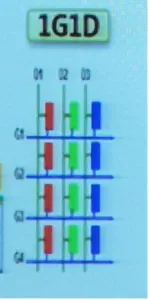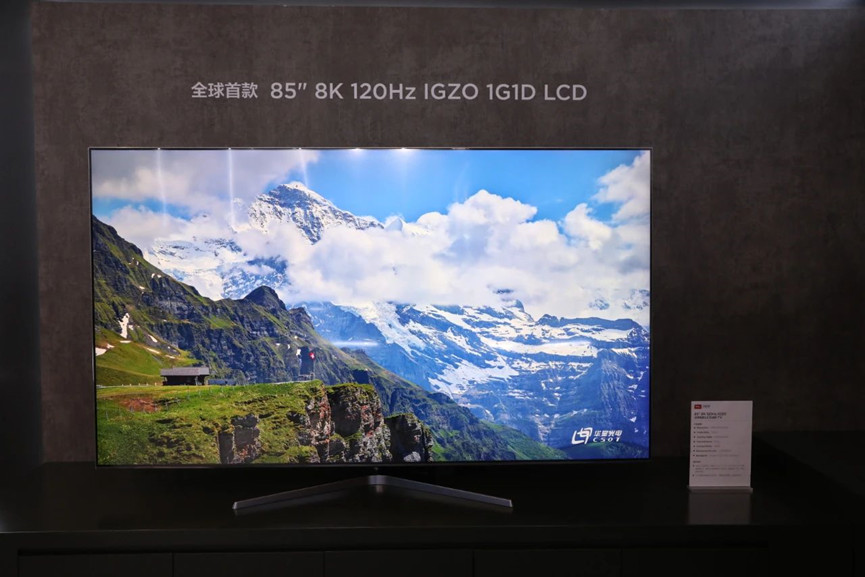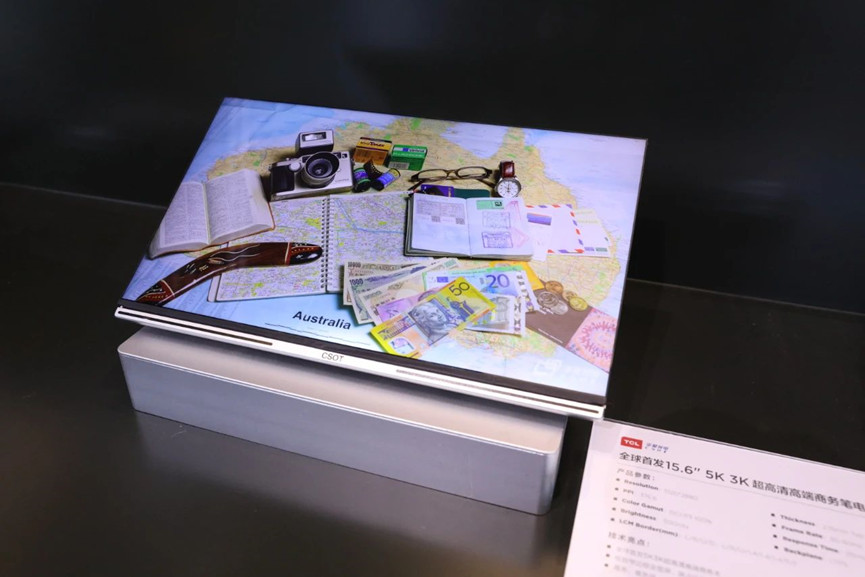TCL CSOT, the world’s second-largest display panel maker, used the 2021 World UHD video industrial conference to unveil a number of new display solutions including two 8K panels and new backplane technology. The event was held May 8-10th in Guangzhou, China with the theme: “Ultra HD world, more colors in life”.
The first innovation has to do with a display’s backplane technology – i.e. the transistors, capacitors and leads fabricated on glass to modulate the light transmitted through each LCD pixel. Transistors can be fabricated with semiconductor materials such as amorphous silicon (a-Si), low-temperature polysilicon (LTPS), or more recently, Indium Gallium Zinc Oxide (IGZO). IGZO offers performance in between a-Si and LTPS and can be used on large substrates, an area where LTPS can’t be used. IGZO is needed for 8K panels to reach a refresh rate of 120 Hz.
CSOT’s innovation is to reduce the complexity of the fabrication of the IGZO backplane. They call it 1G1D for 1 gate and 1 drain to form the transistor to control the pixel. Previous designs have required more transistors to produce a stable device so simplifying the structure means a lower cost and faster fabrication process. Only four masks are required.
As a result, CSOT has produced the world’s first 85” 8K 120Hz 1G1D LCD TV screen with the 1G1D technology. Specifications include an 8-domain pixel structure for wide viewing angles, 4.5% transmission, which is better than most 8K panels, and a contrast ratio of 5000:1 using an HVA mode liquid crystal – extremely good for the native display.
A second innovation is what they call the “Star Obsidian” screen. This refers to a miniLED backlight configuration. The use of thousands of miniLEDs instead of dozens of standard LEDs in the backlight is a trend being adopted in the premium display segment – from tablets to TVs. By having thousands of LEDs, the effective ‘resolution’ of the backlight increases dramatically allowing for better control of the spatial distribution of the light. This leads to higher contrast, brighter screens, and a dramatic reduction in unwanted halo effects (a halo of light around bright objects against a dark background). The goal is to approach the performance of OLED in an LCD panel.
CSOT’s new 75” 8K MLED Star Obsidian screen was revealed at the event. While the number of LEDs was not revealed, the number of dimming zones was: >5,000. This produces a contrast ratio of >1,000,000:1. Brightness and color gamut were not specified other than “high”.
Of particular note are the glass substrate upon which the miniLEDs are mounted and the active matrix driving structure. Most LED backlights and direct-view LED displays mount the LED on PCBs and use a passive matrix or direct driving architecture.
This architecture is not new to TCL as they showed a prototype called Vidrian at CES 2020(MicroLED, QLED, OLED and MiniLED Displays Dazzle at CES 2020), but it was never launched commercially. Will it now be commercialized? This architecture should offer higher performance than the alternative.
Finally, CSOT highlighted a 15.6” UHD resolution notebook panel (376 ppi). It has an ultra-thin border (1.4mm) and achieves 100% of the DCI-P3 color gamut with 500 nits of brightness. It is fabricated on an LTPS backplane.
Availability for none of these displays was revealed. (CC)
This article was first published by the 8K Association in its newsletters and is republished here with kind permission.




